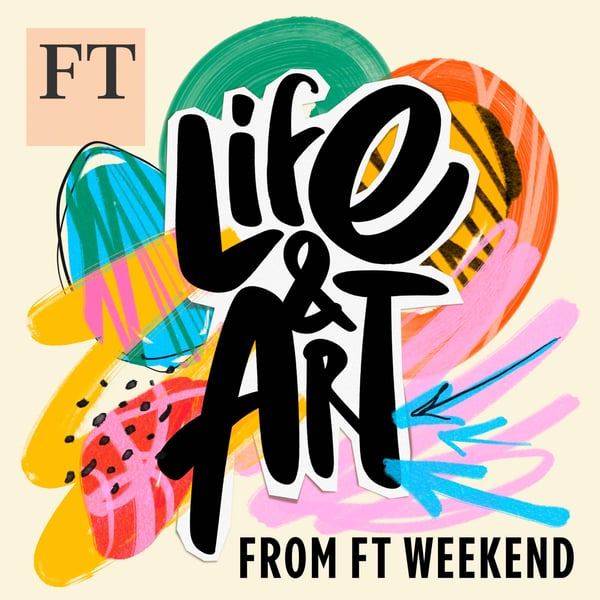What is the future of photography?
Life and Art from FT Weekend
Forhecz Topher
4.6 • 601 Ratings
🗓️ 4 November 2024
⏱️ 22 minutes
🧾️ Download transcript
Summary
Critics have been warning about the death of photography as an art form for years. Smartphones were going to lead to its demise by making everyone a photographer. Then came warnings about AI, which can create photographic images without a human actually being present at a given time and place. But, the FT’s US art critic Ariella Budick argues that instead of dying, the medium has evolved. She joins us to discuss how it has changed from its purest form in the 1950s to today.
-------
We love hearing from you. Lilah is on Instagram @lilahrap, and email at [email protected]. Get in touch this week if you have questions for the great wine critic Jancis Robinson, who'll be answering them on our next Monday episode.
-------
Links (all FT links get you past the paywall):
– Lilah’s profile of the Bronx Documentary Center is here: https://on.ft.com/3NQeAZe
– Ariella’s most recent review is of the exhibition We Are Here at the International Center of Photography: https://on.ft.com/48BeUof
– She’s also recently written about Robert Frank at the MoMA: https://on.ft.com/3ArjnNH
Read a transcript of this episode on FT.com
Hosted on Acast. See acast.com/privacy for more information.
Transcript
Click on a timestamp to play from that location
| 0:00.0 | Welcome to Life and Art from FT Weekend. I'm Lila Raptopoulos. |
| 0:06.6 | Earlier this year, I spent a few months in the South Bronx to write a profile of an arts |
| 0:10.7 | institution in New York called the Bronx Documentary Center. And it made me think a lot about |
| 0:14.9 | photography. One of the many things this school does is offer free photo documentary classes |
| 0:20.1 | to middle and high school students, |
| 0:21.6 | teaching them how to shoot on film cameras and develop their photos in a dark room. |
| 0:26.6 | And the students' work is incredible. |
| 0:29.6 | Part of what makes it so great is that the South Bronx is one of the poorest neighborhoods in the United States, |
| 0:35.6 | and that means that people have assumptions about it. These photos challenge those assumptions because they're taken by the people who know it best. |
| 0:43.3 | Meanwhile, these days, I think we have a pretty suspicious relationship with photographic images. |
| 0:49.3 | Like when you're scrolling on your phone, was that photo you just saw doctored? |
| 0:53.3 | Is it actually an AI image? Is it made to look spontaneous, but really it was staged? This atmosphere now, it makes me wonder if the art that these kids are making in the Bronx still has a place in our jaded world. Our U.S. art critic Aurella Butick has been writing about this medium for years. She actually has a PhD in the history of photography. So I've asked her to join me today to help make sense of the landscape. |
| 1:18.2 | Arellia, hi. Welcome back to the show. Hi. Thanks so much for being here. It's a pleasure. So nice to have you. So I want to start by asking you about your relationship to photography. You did a PhD in the history of photography, right? Yes, I did at the Institute of Fine Arts. |
| 1:35.8 | I know you wrote your dissertation about Diane Arbus, one of the most famous photographers from the 1970s. And I was wondering if you to help me reflect on this |
| 1:45.5 | feeling that I was having while I was reporting on the Bronx Documentary Center. I felt on the one |
| 1:50.9 | hand, like, it was just amazing to watch these kids learn this, like, very pure form of social |
| 1:56.6 | documentary photography. But then on the other hand, the world that we're living in now is just |
| 2:01.8 | so different than it was then. Like we're all making images all day on our phones and we have |
| 2:07.3 | access to phone editing apps and AI. And I'm just wondering how you see that reflected in the |
| 2:13.3 | photography shows that you're going to these days. I think that one of the developments of now is that photographers are putting more thought |
| 2:24.0 | into constructing their images. |
| 2:27.3 | I think that there's always been some doubt about how truthful documentary photography |
... |
Please login to see the full transcript.
Disclaimer: The podcast and artwork embedded on this page are from Forhecz Topher, and are the property of its owner and not affiliated with or endorsed by Tapesearch.
Generated transcripts are the property of Forhecz Topher and are distributed freely under the Fair Use doctrine. Transcripts generated by Tapesearch are not guaranteed to be accurate.
Copyright © Tapesearch 2025.

